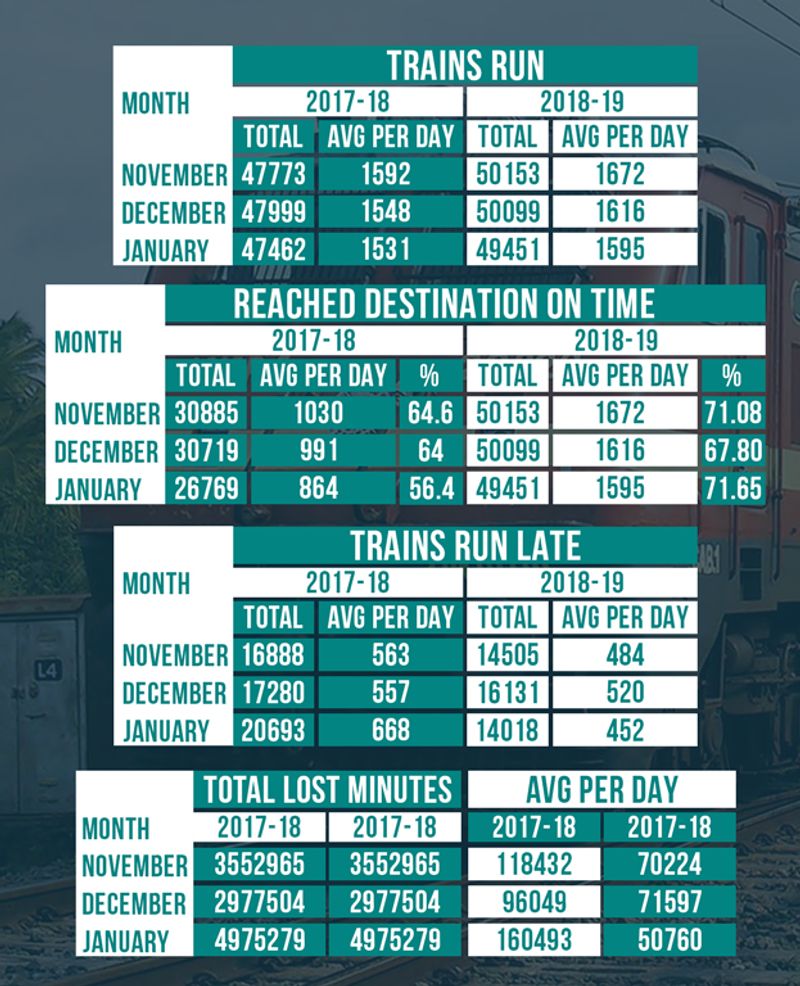The Railways has also managed to cut down the duration of train delays drastically. The current figure shows that the Railways lost 50,760 minutes per day in journey time in January this year, which is three times lesser than the 1,60,493 minutes lost in January last year.
New Delhi: Passengers travelling with Indian Railways has a reason to cheer. The national transporter improved its punctuality by over 15% in January 2019. According to government data, more trains are sticking to their schedules now than in the previous year.
Indian Railways data show that 71.65% of the trains (1,142 trains daily) reached their destinations on time in January this year. This figure was only 56.4% (864 trains daily) in the same month last year.
Data also reflect that despite running more trains — 1,595 daily in January 2019 as against 1,531 daily in January 2018 — the Railways has managed to bring down delays to 452 trains daily. Last year, 668 trains were delayed daily.

The Railways has also managed to cut down the duration of train delays drastically. The current figure shows that the Railways lost 50,760 minutes per day in journey time in January 2019, which is three times lesser than the 1,60,493 minutes lost in January last year.
Figures of December and November 2018 are also encouraging. In December, the Railways brought down minutes lost due to train delays to 71,597 compared to 96,049 minutes in 2017. Similarly, in November 2018, lost minutes stood at 70,224 compared to a whopping 1,18,432 minutes in November 2017.
Also read: India's fastest Train 18 all set for modification, to get extra catering space
The Railways claim to have taken a slew of measures to avoid delay of trains in foggy weather and enhance the level of safety. A modified automatic signalling system has been introduced in the Northern Railway and North Central Railway zones. It would restrict the number of trains to two between two stations during fog.
Further, the Railways are implementing the automatic train protection (ATP) system in selected sections. It would help the loco pilot to run the train confidently even during impaired visibility.
Also read: Arrive at railway station 20 minutes ahead of schedule; security check is a must
To improve punctuality, the Railways has introduced rigorous monitoring at divisional, zonal and railway board levels. They have also standardised rakes and removed infrastructure bottlenecks.
